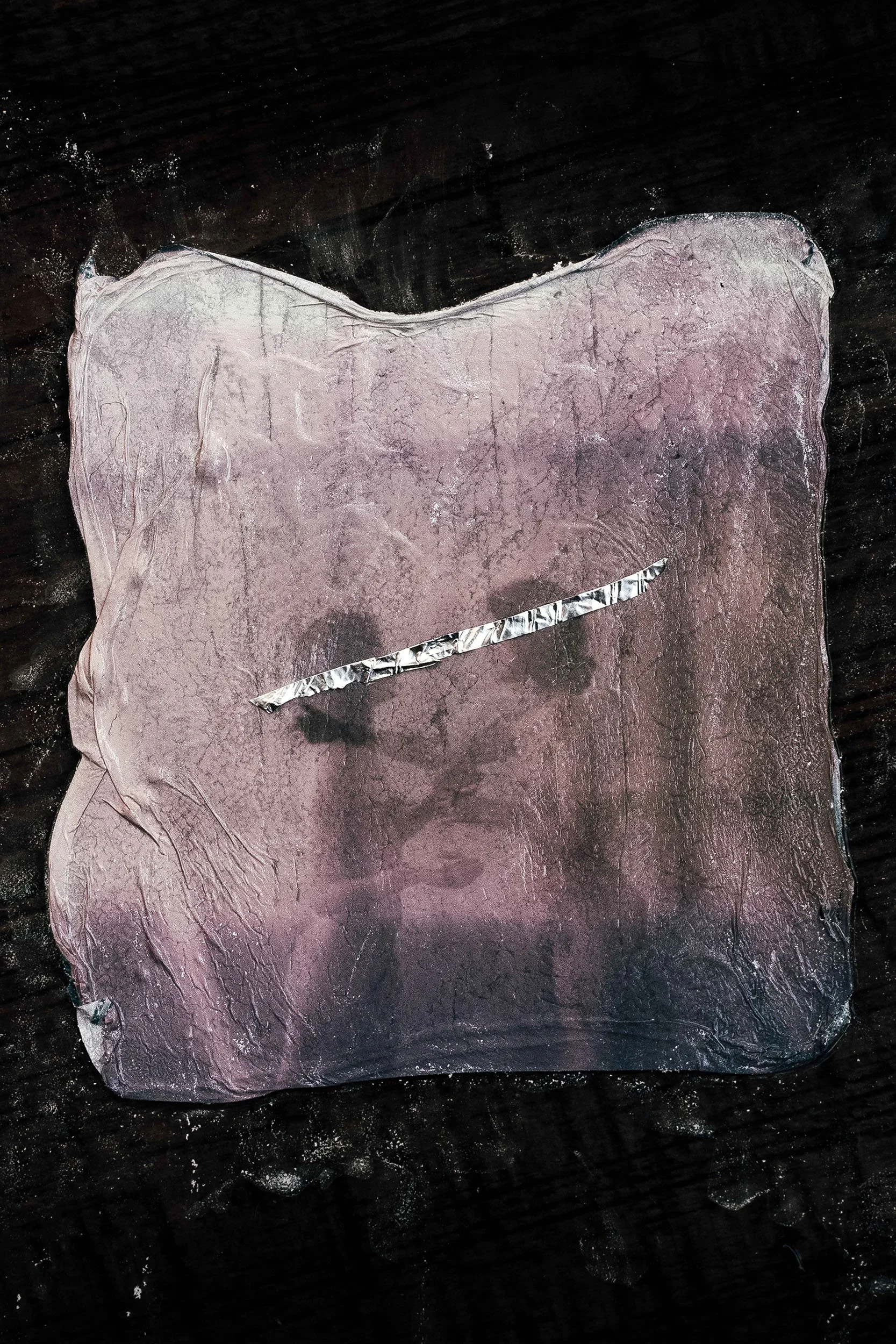On Self-Portraiture and the Soft Work of Knowing Ourselves
I’ve always believed that the camera is a curious kind of mirror, it reflects, but it also asks questions. Over the years, I’ve come to see self-portraiture not as vanity or self-display, but as a vital practice of self-discovery. The slow, intentional act of photographing myself has been a way to listen, to understand, and to reconnect with who I am beneath the noise.
My series “Cloud Head” was born during a period when the world had quieted down and I was left with the only company I could truly rely on, my own interior. That stillness revealed so much: old wounds, unspoken fears, the hidden rhythms of my mind. Through daily Polaroids, I began to explore those states of being, not to document perfection, but to embrace imperfection. Using emulsion lifts and hybrid analog techniques, I physically altered each image, tearing, layering, submerging, as a metaphor for deconstruction and healing. I was, quite literally, rebuilding myself image by image.
Self-portraiture, for me, is a way of reclaiming agency. For so long, women have been seen through other people’s eyes, directed, posed, and defined by external gazes. When I turn the camera on myself, I take back that narrative. I decide what stays in the frame, how the light touches me, and which version of myself I want to meet that day. It’s not about control, but about honesty. Some days, the image is soft and grounded. Other days, it’s fractured, blurred, uncertain, and that’s also me.
There’s something deeply therapeutic in letting accidents and imperfections become part of the process. The mistakes in the darkroom, the chemical stains, the uneven edges, they all tell the truth of being human. Through “Cloud Head”, I learned to accept incompleteness as a form of beauty. That acceptance is at the heart of my practice: the permission to be in process, to not know, to evolve.
When Cloud Head was exhibited at festivals like the Rotlicht Festival in Vienna and the Experimental Photo Festival in Barcelona, I realized how personal stories can become shared languages. Viewers saw parts of themselves in my fragments. What began as private healing became a collective reflection, proof that vulnerability connects us more deeply than perfection ever could.
Today, I see self-portraiture as a conversation between who I am and who I’m becoming. It’s a practice that any woman can embrace, not to perform for others, but to meet herself, frame by frame. Whether with a Polaroid, a phone, or a handmade print, every image is a moment of truth, a dialogue with the self that says: I see you.
And if you’d like to explore this process more deeply, I’ve gathered my reflections and exercises in my e-book, Reflections, a gentle guide to using photography as a tool for self-knowledge and creative healing. Inside, I share the methods that shaped my own journey: exercises that blend journaling, analog experimentation, and mindful observation.
👉 Get your copy on Gumroad: brunavalenca.gumroad.com/l/reflections
Turn the lens inward. Begin to see yourself, truly see yourself, and watch what unfolds.



